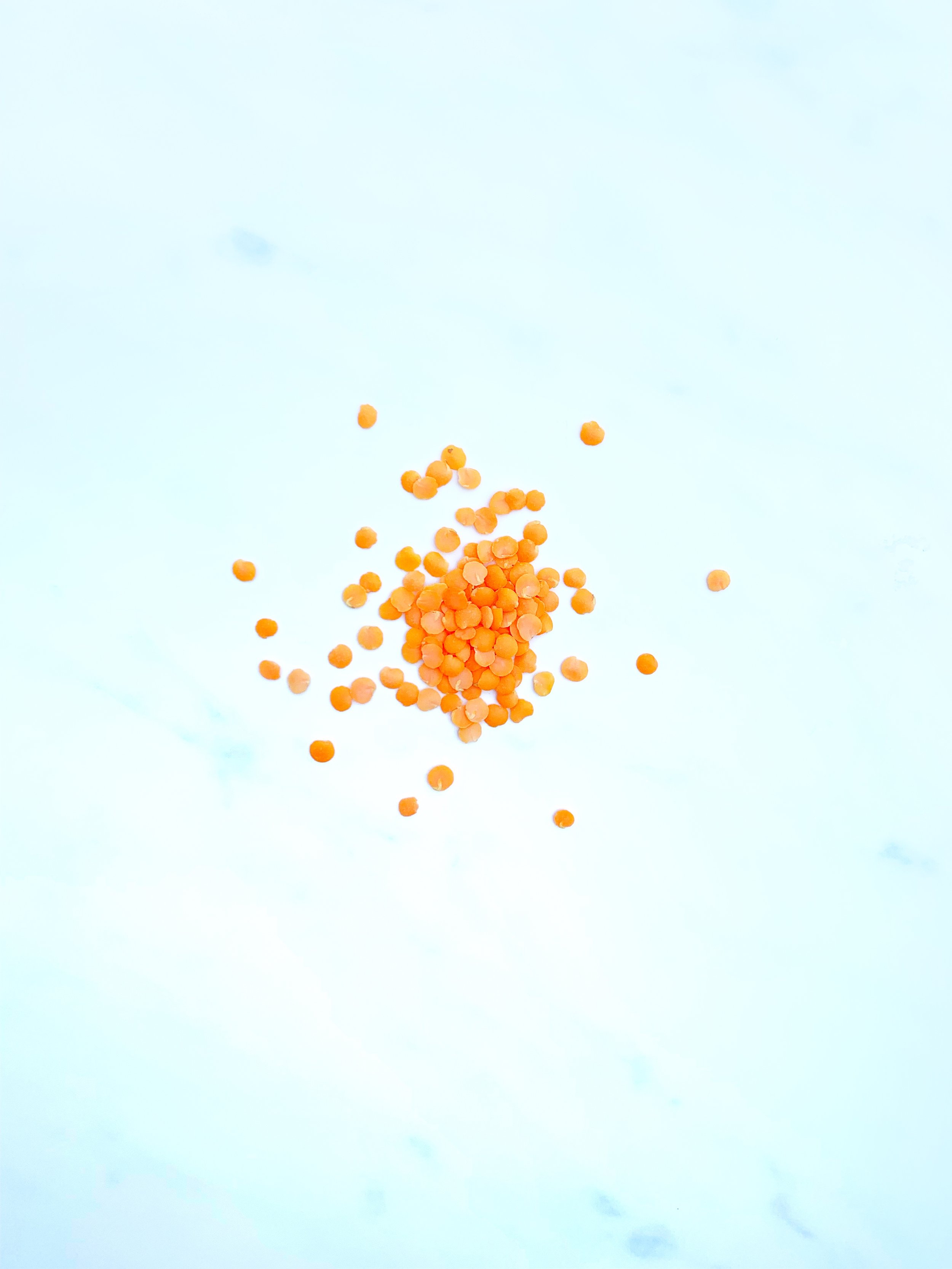Guide to Toddler Nutrition
Whether you're a first-time or experienced parent, the challenges of toddler nutrition can be overwhelming.
Nutritious foods and healthy eating behaviors are essential for healthy growth and development and kids ages 2 to 3 years old need a variety of nutrients to support their rapidly growing bodies and developing brains. But actually getting toddlers to eat foods that contain these key nutrients they need can be challenging.
This stage of development is known for picky eating behaviors and strong preferences for (and against) certain foods. Understanding toddler nutrition is as important as having the tools to manage eating difficulties common for this age group. As a child feeding expert, I work with many families struggling to help their little ones learn to accept new foods.
This article will explore the key nutrients toddlers need, solutions for common toddler nutrition-related challenges, and tips for planning balanced meals and snacks for toddlers.
Toddler Nutritional Needs
Children need a wide variety of vitamins and minerals to thrive and develop properly. But there are certain critical nutrients essential for growing kids. An inadequate intake of iron, vitamin D, and calcium in children can affect cognitive and healthy bone development.
Iron
Iron plays an important role in red blood cells and brain development. Iron is needed to produce hemoglobin, a protein that carries oxygen throughout the body. When a child doesn’t get enough, they can become anemic and experience symptoms like fatigue, weakness, and poor appetite.
The effects of anemia in childhood are especially concerning regarding cognitive development. Iron plays a crucial role in brain health and brain development. An iron deficiency during this critical window can affect a child’s cognitive ability and may prevent them from reaching their cognitive potential.
That’s why iron-rich foods are crucial during complementary feeding and toddlerhood.
Heme (animal-based) and non-heme (plant-based) iron are two kinds of iron found in food. Red meat and other animal foods are probably the most well-known - these contain heme iron. The body absorbs iron from heme foods more efficiently than non-heme foods.
But with careful planning and a balanced diet that includes plenty of healthy foods, kids can get enough iron on a plant-based diet.
Non-heme iron is found in plant-based foods, including fortified cereals, bread, beans, lentils, tofu, potatoes, and spinach. Although the body doesn't absorb hon-heme iron as efficiently, children can usually meet their daily iron needs if they eat enough calories from a variety of foods.
1 to 3 years olds require 7 mg of iron daily.
Here are some examples of typical iron-rich foods:
1 serving of fortified breakfast cereal = 18 mg of iron
½ cup cooked lentils = 3 mg of iron
3 oz of beef = 2 mg of iron
½ cup of canned stewed tomatoes = 2 mg of iron
Calcium
Calcium is an essential nutrient for bone health throughout all stages of life. Calcium is deposited in bones until adults reach their peak bone mass around 30 years old, when bones begin to lose calcium. The bones may suffer later in life if calcium intake was insufficient during childhood.
The body regulates calcium, and levels tend to remain constant. Calcium deficiency doesn't show up right away. Over time, inadequate calcium intake can cause porous bones, osteopenia, and osteoporosis.
Dairy is the most well-known source of calcium. It's also found in fortified orange juice, soymilk, tofu, sardines, and salmon.
1 to 3-year-olds require 700 mg of calcium daily.
Here are some examples of typical calcium-rich foods:
8 ounces of plain yogurt = 415 mg of calcium
1 cup of calcium-fortified orange juice = 349 mg of calcium
1 cup of low-fat milk = 299 mg of calcium
1 cup of calcium-fortified soymilk = 299 mg of calcium
Vitamin D
Vitamin D improves calcium absorption.
Children's bones grow in length and density until they reach puberty. Infants go through a few big growth spurts in the first year, then growth slows at about 1 to 2 years old. Vitamin D requirements peak for teens and then slightly decrease after puberty.
Bones grow in density even during periods of slow growth.
When children don't get enough vitamin D, they can develop rickets which causes bones to become soft. As active toddlers walk, run, and play, the legs curve outward, leading to "bowlegs."
Vitamin D is a challenging nutrient to get from the diet. It doesn't occur naturally in most foods - even milk. But, in the U.S., milk and orange juice are fortified with vitamin D.
Vitamin D is also found in animal and plant foods, including trout, salmon, mushrooms, soy, fortified breakfast cereals, and eggs.
And, remember, the sun is a source of vitamin D.
The body makes vitamin D when sunlight hits the skin. Because this vitamin is harder to get, some children may need a supplement. Always discuss supplements with your pediatrician first.
1 to 3-year-olds require 15 μg of vitamin D daily.
Here are examples of the best vitamin D foods:
3 oz salmon = 4.2 μg of vitamin D
½ cup of mushrooms = 9.2 μg of vitamin D
1 cup of fortified milk = 2.9 μg of vitamin D
1 serving of fortified breakfast cereal = 2 μg of vitamin D
Nutrient Requirements for 1 - 3-Year-Olds
While knowing the requirements as a guideline is helpful, I recommend focusing on nutrient-rich foods instead of counting DRIs.
| Nutrient | Dietary Reference Intake (DRI) | Food |
|---|---|---|
| Iron | 7 mg daily | Beef, chicken, tuna, turkey, egg, fortified cereals, bread, beans, lentils, tofu, potatoes and spinach |
| Calcium | 700 mg daily | Milk, yogurt, cottage, cheese, soymilk, fortified orange juice, tofu, salmon, fortified breakfast cereals. |
| Vitamin D | 15 μg daily | Milk, mushrooms, trout, salmon, soy, fortified breakfast cereals and eggs |
Nutrient-Rich Foods for Toddlers
By 2 to 3 years old, toddlers eat 3 meals and 2 to 3 snacks daily. Focus on variety and serve fruits, vegetables, protein, dairy, and grains for meals and snacks.
Tiny tummies need nutrient-rich foods at every meal and snack. Salty and sugary foods are typically higher in calories but lower in vitamins and minerals. When toddlers fill up on processed foods, they won’t be as hungry for nutritious meals. Feeding schedules help regulate hunger and manage feeding-related challenges such as picky eating.
Fruits and vegetables provide essential vitamins, minerals, fiber, and antioxidants. Ideally, we start offering fruits and veggies starting during complementary feeding at about 6 months old. Babies and kids are more willing to accept vegetables when they're introduced early and after repeated exposures. Some favorites include avocado and pumpkin.
Protein is vital for muscle and tissue growth and can be found in lean meats, poultry, fish, beans, and tofu.
Dairy provides calcium and vitamin D, which are important for building strong bones and teeth. If your little one is lactose intolerant, allergic to cow's milk, or if you prefer a plant-based option, there are non-dairy alternatives with protein and calcium, although some offer more of the nutrition toddlers need than others. Plant-based milks don't have the same nutrition profile as cow's milk. This e-book provides help in choosing an unsweetened milk option that has adequate protein and is fortified with calcium and vitamin D.
Grains provide energy and essential nutrients like fiber, B vitamins, and iron. Emphasize whole grains such as millet, barley, whole grain pasta, and quinoa. Whole grains are higher in fiber, which keeps kids feeling full longer and helps prevent constipation. Constipation is common at this age when toddlers are fully weaned and eating all solid foods.
Why Does My Toddler Always Want Carbs?
Don’t be surprised if your toddler seems to be a carb-monster! Carbohydrates are their bodies’ preferred fuel source for growth and energy and should make up about 45-65% of daily calories. This can sometimes seem like a lot when you consider that for 1-3-year-olds, only about 5-20% of daily calories should come from protein.
Toddler Nutrition Chart
According to the USDA's MyChart for 1 to 3-year-olds, the food group guidelines to follow for toddlers are:
| Food Group | 1 to 2-year-olds | 2 to 3-year-olds | Food |
|---|---|---|---|
| Fruits | ½ - 1 cup | 1 - 1 ½ cups | 1 cup counts as:
|
| Vegetables | ⅔ - 1 cup | 1 - 1 ½ cups | 1 cup counts as:
|
| Protein | 2 oz | 2 - 4 ounces | 1 ounce counts as:
|
| Dairy foods | 1 ⅔ - 2 cups | 2 - 2 ½ cups | 1 cup counts as:
|
| Grains | 1 ¾ - 3 ounces | 3 - 5 ounces | 1 oz counts as:
|
*Chart is based on USDA’s MyPlate for children ages 24 months to 36 months of age.
Common Toddler Feeding Issues
Feeding a toddler can be challenging. Toddlers often use food and mealtime to assert their growing need for independence. Not surprisingly, many childhood feeding problems take root during toddlerhood.
Here are a few common feeding issues with links to articles that provide tips and solutions:
Picky eating - typical picky eating behaviors are very common in young children - particularly toddlers. Picky eaters avoid certain foods and have aversions to specific colors and textures. They may like a particular food or drink one day, and the next day refuse it. Food play activities can help! Applying the principles of Ellyn Satter’s Division of Responsibility between parents and children can help as well.
Throwing food - many toddlers throw food for fun, because they're not hungry, or because it's related to picky eating.
Loss of appetite - there's a natural dip in appetite once babies reach 12 months old. Babies go through a few growth spurts, then growth slows down once they're toddlers, so they're not as hungry.
Too much milk - drinking too much milk can lead to iron deficiency, anemia, and constipation. The calcium in milk binds iron from the diet and prevents iron from being absorbed.
Spitting out foods - this can happen for a variety of reasons, including not liking the taste or texture, or exploring new food. Although there's a bigger mess to clean up, it doesn't mean there's anything wrong most of the time. But, it’s also important for us as parents to encourage positive eating behaviors early on, as best we can. Studies show that negative eating behaviors in young kids can have long-term consequences on a child's eating behavior and even health.
Appetite loss due to illness - when a toddler gets sick, feeding and hydration can be especially challenging. Here are tips on hydrating and feeding toddlers during illness.
For more tips on feeding kids, grab my FREE guide to reducing picky eating, and if you are looking for help navigating picky eating behaviors in your toddlers, preschoolers, and school-age kiddos, check out my online course, Solve Picky Eating, a self-paced set of 12 modules that are delivered quickly in 5-15 minute videos.
And if you need guidance around a specific nutrition-related concern, I am currently accepting new clients in my virtual private practice. Book a 1:1 session with me and we’ll get to the bottom of it.










